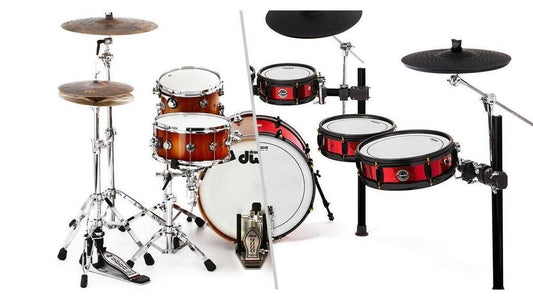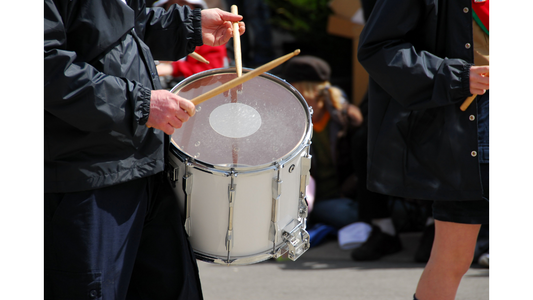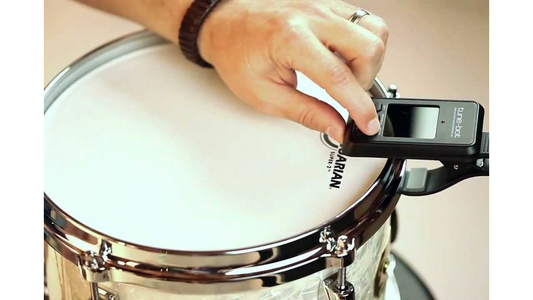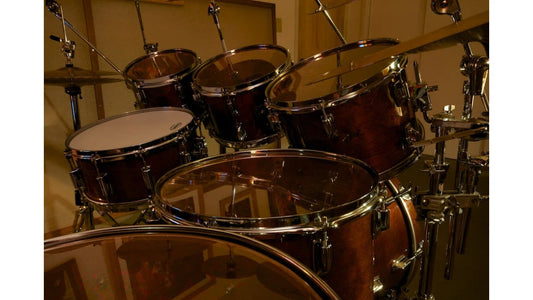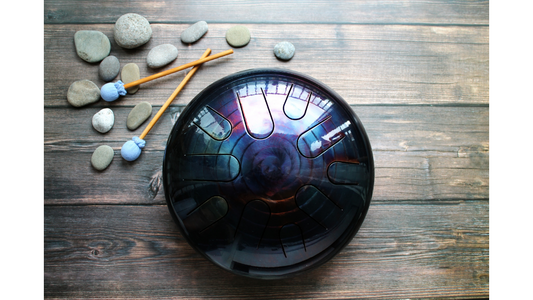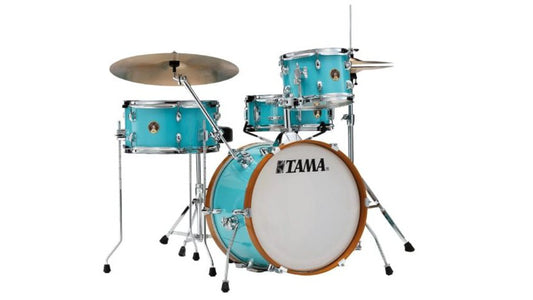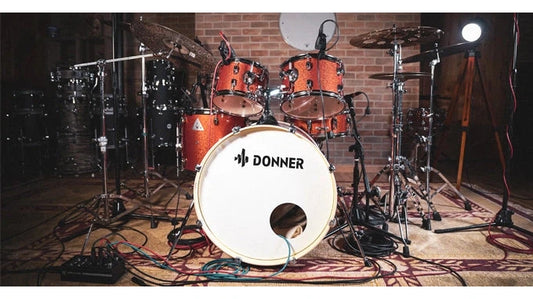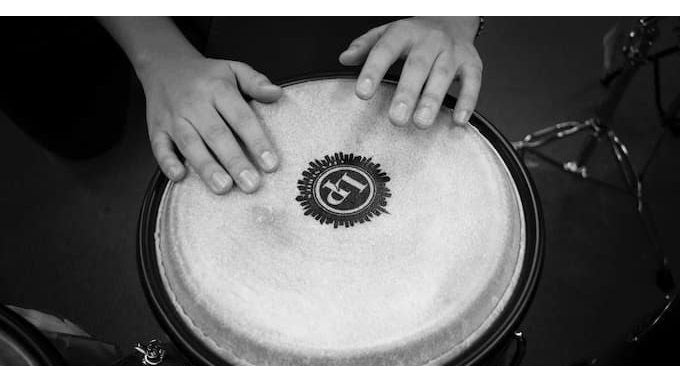
Nghệ Thuật Thành Lập Và Điều Hành Một Đội Trống - Drum Band
Trước khi làm bất cứ điều gì khác, nếu bạn chưa bao giờ làm điều đó trước đây, tôi khuyên bạn nên tham dự một vài cộng đồng trống do những người khác điều hành trước khi bắt đầu của riêng bạn. Điều này không cần thiết, nhưng tham gia một vài hội nhóm có thể giúp bạn hiểu rõ về cách chúng tổ chức ra sao.
Nếu bạn không thể tham gia một buổi tại địa phương, bạn có thể tìm các cộng đồng đó trên YouTube. Trước tiên, hãy cùng điểm qua một số thực tế và chúng ta sẽ đi sâu vào nội dung âm nhạc sau.
Logistics của việc thành lập cộng đồng chơi trống
Nếu bạn là một tay trống khá giỏi — hoặc nếu bạn biết một số tay trống xuất sắc — bạn có thể bắt đầu một vòng kết nối để giao lưu, cải thiện cách chơi của mình hoặc để giải trí. Nếu đúng như vậy, bạn sẽ cần năm hoặc sáu người tham gia, một địa điểm, một ngày đã thống nhất và một số tay trống (djembe, bongo, conga, v.v.). Hãy cố gắng tìm được những địa điểm có chi phí thấp nhất có thể, bao gồm các trung tâm cộng đồng và nhà thờ ở nhiều khu vực. Ngoài ra, có thể nên chia nhỏ chi phí thuê địa điểm giữa những người tham dự. Độ dài và tần suất của các phiên là tùy thuộc vào bạn. Tuy nhiên, tôi khuyên bạn nên kéo dài mỗi phiên từ 1 đến 1,5 giờ, với thời gian nghỉ giải lao ở giữa.
Điều đáng khuyến khích là mọi người mang theo trống của riêng mình, nhưng sẽ không vấn đề gì nếu có một vài phụ tùng cho những người mới có thể muốn tham gia. Tất nhiên, luôn có một người sẽ quên đồ!
Có kế hoạch
Không cần thiết phải có một kế hoạch chi tiết cho từng phiên nếu bạn đang gây dựng 1 cộng đồng từ những người chơi chuyên nghiệp. Lập kế hoạch có thể có lợi nếu bạn là người tương đối mới với kiểu đánh trống này. Một kế hoạch có vẻ như không phù hợp với đặc tính của cộng đồng chơi tự do, nhưng cần có thời gian để xây dựng phù hợp với dòng chảy thiền, ứng biến. Lập kế hoạch sẽ giúp bạn vui vẻ và kiểm soát được các buổi luyện tập khi làm việc nhóm.
Thời gian thường trôi khá nhanh khi chơi trống theo cộng đồng, vì vậy hãy cân nhắc việc có một kế hoạch chính chỉ bao gồm một số mục; sau đó có thêm những nội dung bổ trợ khác để bạn có thể sử dụng vào cuối buổi.
Nếu nhóm vẫn tiếp tục họp, bạn không cần phải giữ một số hoạt động này lại cho các phiên họp sau này. Ngoài ra còn có vô số tài nguyên trực tuyến với các trò chơi trống và bài tập khác nhau mà bạn có thể áp dụng cho cộng đồng của mình nếu hết ý tưởng.
Dưới đây là một số điều mà kế hoạch của bạn nên bao gồm:
Truyền đạt thông tin về nhóm, bao gồm giới thiệu, lịch trình và ranh giới.
Khi bắt đầu nhóm, bạn nên dành năm phút để giới thiệu và phác thảo ngắn gọn bất kỳ thông tin nào về nhóm hoặc địa điểm, điều này có thể hữu ích nếu bạn biết rõ những thông tin này. Và nếu bạn đang nghỉ giữa chừng, hãy cho mọi người biết tại thời điểm này.Thông thường không cần thiết phải phác thảo các kỳ vọng ranh giới rõ ràng.
Tuy nhiên, có thể đáng để nêu lên bất kỳ lời nhắc nào có liên quan về việc thanh toán tiền thuê địa điểm, quy tắc địa điểm và một số điểm nghi thức dễ bị lãng quên, chẳng hạn như không chạm vào khi mọi người đang nói chuyện. Hãy bắt đầu với tốc độ thoải mái và nhẹ nhàng - đặc biệt là lúc đầu. Tất nhiên, bạn sẽ muốn bắt đầu đánh trống càng sớm càng tốt, nhưng thật đáng kinh ngạc là một phiên có thể trôi qua rất nhanh và bạn không muốn ‘cháy giáo án’, phải không nào?
Nếu cần thiết, hãy giải thích các loại trống
Nếu có một vài người mới trong nhóm của bạn, hãy dành chút thời gian để giải thích từng tiếng trống. Biểu diễn các âm thanh khác nhau mà bạn có thể tạo ra với mỗi trống và giải thích cách tốt nhất để chơi từng trống. Quá trình này chỉ mất vài phút nhưng có thể làm cho phiên tốt hơn cho tất cả mọi người.
Các trò chơi khởi động
Vài buổi đầu tiên thường có thể giúp bạn bắt đầu bằng một số trò chơi khởi động. Chúng ta sẽ nói về một số vấn đề này ở phần sau của bài viết, nhưng xin nhắc lại - đừng vội vàng. Hãy để mọi người trải nghiệm từng trò chơi, tận hưởng quá trình và làm quen với việc chơi cùng nhau.
Giới thiệu ba hoặc bốn nhịp điệu
Từng nhịp một, giới thiệu ba hoặc bốn nhịp điệu cho cả nhóm. Dành một chút thời gian cho mỗi nhịp. Cho phép mọi người thích chơi cùng nhau và làm quen với từng cụm từ nhịp nhàng.
Đừng đánh giá thấp mức độ thử thách của một số nhịp điệu đối với những người không thường chơi trong vòng tròn trống. Năm phút chơi mỗi nhịp có lẽ là một khoảng thời gian hợp lý. Nếu hữu ích, bạn có thể sử dụng các câu ngắn, tiêu đề phim, địa danh và các cụm từ nói khác để cho phép mọi người chơi chính xác từng nhịp điệu.
Dưới đây là ba ví dụ:
Giới thiệu các thay đổi động
Giải thích cách nhóm có thể sử dụng những thay đổi năng động để phát triển sự đa dạng trong âm nhạc. Ví dụ, khi mọi người đang chơi cùng nhau, bạn có thể giơ tay và hạ thấp tay để ra hiệu cho cả nhóm rằng họ nên chơi to hơn hoặc nhỏ xuống.
Cuối cùng, bạn có thể loại bỏ tín hiệu tay này và khuyến khích nhóm lắng nghe (và theo dõi) những thay đổi năng động của nhau.
Chia nhóm thành một nửa, phần ba hoặc phần tư và chỉ định nhịp điệu cho mỗi nhóm
Khi làm điều này, ý tưởng là làm cho cả nhóm quen với việc chơi các cụm có nhịp điệu khác nhau đồng thời trong khi vẫn đúng lúc với nhau. Đây là một lĩnh vực mới mà mọi người có thể gặp khó khăn lúc đầu, vì vậy nếu nhóm của bạn là tập hợp những người mới chơi, hãy bắt đầu với hai nhịp điệu đồng thời và xây dựng từ đó.
Tiết kiệm thời gian để chơi miễn phí, bắt đầu từ ghi chú hàng quý
Đó là một ý tưởng tuyệt vời nếu bạn có thời gian trống miễn phí trong mỗi phiên — ngay cả khi chỉ trong mười phút cuối cùng (mặc dù bạn chắc chắn có thể dành nhiều thời gian hơn thế khi mọi người tự tin hơn).
Nếu chưa quen với cách đánh trống vòng tròn, bạn có thể thử kêu gọi mọi người bắt đầu chơi các nốt đồng thời ở tốc độ 80bpm. Sau đó, mời mọi người phân nhánh bằng cách ứng biến nhịp điệu đơn giản của riêng họ, nhịp điệu này phát triển tự nhiên theo thời gian.
Bắt đầu theo cách này có thể giúp đảm bảo rằng mọi người luôn đồng bộ với nhau và giúp nhóm duy trì nhịp độ nhất quán.
Cố gắng khuyến khích mọi người ghi nhớ một số nguyên tắc âm nhạc hữu ích — như biến thể động — và nhắc mọi người rằng họ không nhất thiết phải chơi mọi lúc.
Đôi khi, việc thỉnh thoảng lỡ nhịp có thể giúp tạo ra nhiều sự đa dạng hơn và đó không phải là điều tồi tệ.
Sự cân bằng giữa việc lập kế hoạch và làm việc mệt mỏi
Cố gắng tìm sự cân bằng giữa việc chuẩn bị quá kỹ và chuẩn bị quá hời hợt. Giống như bắt đầu đốt lửa trại, tất cả là về sự cân bằng phù hợp giữa các thành phần, hoạt động và thời gian.
Đánh trống vòng tròn thường được thưởng thức tốt nhất khi có sự tự do chơi và ứng biến mà không có nhiều ranh giới. Tuy nhiên, những tay trống vòng tròn mới có thể thấy khó ứng biến nếu không có cấu trúc hướng dẫn quy trình.
Tất nhiên, điều ngược lại cũng đúng. Nếu bạn lấp đầy mọi phiên bằng hoạt động có cấu trúc, bạn có nguy cơ bóp chết tính tự phát của mỗi phiên. Cuối cùng, mọi thứ có thể cảm thấy cũ và các phiên có thể tạm dừng.
Mục đích là sử dụng cấu trúc để cung cấp cho mọi người một nền tảng để xây dựng, từ đó nhẹ nhàng loại bỏ cấu trúc đó để mọi người ngày càng tự tin hơn khi ứng biến.
Nếu có thể đảm bảo được sự cân bằng, bạn sẽ thấy sự tiến bộ của phiên.
Cuối cùng, bạn có thể bắt đầu mỗi phiên bằng một hoặc hai trò chơi khởi động và sau đó chuyển thẳng sang đánh trống tự do.
Trò chơi khởi động
Dưới đây là một số trò chơi khởi động có thể là một khởi đầu tốt cho phiên của bạn. Chúng đặc biệt tốt cho những người mới tập đánh trống vòng tròn, nhưng chúng có thể được sử dụng trong mọi ngữ cảnh. Có rất nhiều tài nguyên về vòng tròn trống trực tuyến, vì vậy hãy tìm kiếm chúng thêm trên Google!
The Name Game
The Name Game là một cách tuyệt vời để giới thiệu mọi người với nhau và nó có thể giúp thư giãn mọi người. Mỗi người lần lượt chơi ba nốt và sau đó nói tên của họ. Cố gắng đảm bảo rằng mỗi người nói tên của họ ở nhịp bốn và người tiếp theo bắt đầu chơi ở nhịp một.
Đây là một trò chơi đơn giản, nhưng nó có thể phức tạp đối với những người không phải là tay trống, vì vậy, hãy thoải mái chơi hai lần nếu cần thiết và thể hiện tinh thần khích lệ động viên trong suốt quá trình.Để làm cho mọi thứ trở nên phức tạp hơn, bạn có thể sử dụng một số nhịp điệu phức tạp hơn cho ba nhịp đầu tiên và thử tăng nhanh nhịp độ.
Cuối cùng, bạn có thể lặp đi lặp lại trò chơi này trong khi thay đổi danh mục cho mỗi vòng. Vì vậy, bạn có thể — chẳng hạn — tìm ra món ăn yêu thích của mọi người hoặc chương trình truyền hình yêu thích của họ.
Trò chơi Gương
Trong trò chơi này, một người được chỉ định chơi một nhịp và cả nhóm phải lặp lại nhịp đó cho họ. Vì vậy, một lần nữa, hãy cố gắng đảm bảo rằng mọi người luôn ở bên nhau khi họ làm điều này.
Bạn có thể bắt đầu bằng cách tự chơi một vài nhịp điệu và sau đó chỉ định các thành viên khác trong vòng kết nối thử. Bạn có thể tăng nhịp độ, làm cho nhịp khó hơn và thêm những thứ như biến thể động để làm cho điều này phức tạp hơn.
Điện thoại
Điều này giống như Trò chơi Gương, chỉ khác là lần này, một nhịp điệu phải được chuyển qua vòng tròn. Một lần nữa, bạn có thể bắt đầu mọi thứ với một vài nhịp điệu trước khi chuyển giao trách nhiệm cho các thành viên khác trong nhóm.
Như với Trò chơi gương, bạn có thể thử tăng tốc độ, thay đổi mức độ động và làm cho nhịp điệu khó hơn khi chơi. Bạn cũng có thể làm chậm một số nhịp điệu xuống ngay và - đối với những tay trống vòng tròn dày dạn kinh nghiệm - chơi hai nhịp điệu khác nhau theo các hướng ngược nhau.
Tôi thích chơi trống
Trong trò chơi này, điều hành viên nói cụm từ, "Tôi thích chơi trống." Đối với từ "trống", mọi người nên chơi trống của họ một lần. Đảm bảo rằng mọi người chơi đồng thời và ngắn gọn.
Sau đó, bạn có thể nói câu đó nhanh hơn và chậm hơn, thay đổi tốc độ để cố gắng loại bỏ những người tham gia trò chơi của họ.
Bạn có thể thay đổi nhiều thứ hơn nữa bằng cách bỏ từ ‘trống’ - hoặc bất kỳ (các) từ nào khác trong câu. Mặc dù thiếu từ, mỗi tay trống vẫn phải chơi đồng thời khi họ đến điểm mà từ "trống" sẽ được nói.
Ví dụ: bạn có thể nói, “Tôi thích…”
Ở đây, các từ ‘chơi trống’ đã được bỏ đi, và mỗi người tham gia phải tưởng tượng các từ đó và chơi đúng thời điểm (bạn cũng có thể bỏ tất cả các từ ra khỏi câu và xem mọi người có còn kịp không).Để giải trí một chút, bạn có thể quyết định rằng họ phải đặt trống xuống và không chơi cho đến khi trò chơi khởi động lại khi ai đó bị đuổi ra ngoài.
Bạn có thể chọn "nhà vô địch" của trò chơi dựa trên người chơi đến cuối cùng mà không bị bắt.
Thêm cảm hứng
Nếu vòng kết nối của bạn gặp gỡ thường xuyên, cuối cùng bạn có thể thấy mình đang tìm cách để thêm sự đa dạng cho các phiên của mình. Những ý tưởng sau đây được thiết kế để trở thành địa điểm bắt đầu chứ không phải là điểm đến.
Mỗi thứ có thể được sử dụng làm nền tảng để bắt đầu. Sau đó, âm nhạc có thể được phép phát triển và phát triển một cách tự nhiên từ những ý tưởng ban đầu này
Đánh trống từ một bức tranh
Yêu cầu nhóm mang theo một bức ảnh, bức tranh hoặc bức tranh mà họ thích đến buổi học. Sau đó, chọn một trong những hình ảnh để đặt vào giữa vòng tròn. Sử dụng hình ảnh làm nơi bắt đầu cho việc đánh trống. Điều này mang tính chủ quan cao và không mang tính đúng/ sai. Một hình ảnh bão biển có thể truyền cảm hứng cho một sự ngẫu hứng lớn trong 6/8; một bức ảnh macro về côn trùng có thể gợi lên điều gì đó yên tĩnh hơn và nhanh hơn.
Đánh trống từ một đồ vật hoặc động vật
Trong cách tiếp cận này, mọi người trong nhóm lần lượt đặt tên cho một đồ vật hoặc một con vật. Từ danh sách đó, một người được chọn. Tiếng trống tiếp theo phát ra từ những phẩm chất của sự lựa chọn đó.
Ví dụ, một con voi có thể truyền cảm hứng cho tiếng trống to, chậm, dồn dập, trong khi một chiếc ô tô thể thao có thể gợi lên tiếng trống nhanh, dồn dập.
Đánh trống từ một cụm từ
Như chúng ta đã thảo luận trước đó, đôi khi sử dụng một cụm từ là 1 cách tuyệt vời để bắt đầu. Lần này, nhóm không phải chơi từng âm tiết của cụm từ — mặc dù đây là nơi lý tưởng để bắt đầu — thay vào đó, ý nghĩa hoặc âm thanh của cụm từ có thể gợi lên điều gì đó thú vị.
Ví dụ: khi tôi ở trường khi còn nhỏ, chúng tôi sẽ chơi một trò chơi mà bạn phải tránh đi trên các vết nứt trên vỉa hè. Chúng tôi nói, "Đừng dẫm lên vết nứt, nếu không bạn sẽ ngã và gãy lưng!"
Sử dụng giai đoạn này, từ 'don’t' có thể được tìm thấy ở trung tâm của djembe; "Back" và "crack" có thể được tìm thấy trên các cạnh. Nhóm có thể bắt đầu bằng cách chơi các âm tiết trong cụm từ nhưng sau đó phát triển các nhịp điệu khác nhau và các ý tưởng âm nhạc khác. Có thể là nhóm cố gắng tập trung ít hơn vào các âm tiết hoặc âm thanh trong mỗi cụm từ và thay vào đó chọn tập trung vào ý nghĩa của nó.
Ví dụ: cụm từ “There’s a rain brewin” có thể được ghép nối với mỗi tay trống chơi những thứ nghe có vẻ điềm báo, căng thẳng và đen tối. Lời bài hát nổi tiếng "The sun has got his hat on and is coming out to play" có thể gợi lên điều gì đó nhẹ nhàng, vui tươi và nhanh chóng.
Lời kết
Đánh trống vòng tròn có thể rất vui. Nếu bạn là một tay trống dày dạn kinh nghiệm và biết một nhóm những người chơi giỏi, bạn có thể bắt đầu một vòng đánh trống một cách nhanh chóng sau khi bạn đã chuẩn bị xong công việc hậu cần. Nếu bạn ở trình độ thấp hơn, tôi hy vọng bài viết này sẽ trình bày cho bạn một vài ý tưởng để giúp bắt bóng và làm rung chuyển các phiên một chút trong suốt quá trình. Nếu bạn không biết nhiều tay trống hoặc chưa quen với việc tự đánh trống, bạn có thể cần phát triển vòng kết nối của mình một cách chậm rãi và kiên nhẫn — mang mọi người đến với bạn và vui vẻ.
Hãy thoải mái lấy những ý tưởng này và thực hiện với chúng hoặc thay đổi chúng theo nhiều cách để phù hợp với nhóm của bạn. Tuy nhiên, cuối cùng, cách tốt nhất để bắt đầu một vòng tròn trống là liên hệ với một số bạn bè và bắt đầu. Vì vậy, tôi hy vọng bạn làm như vậy và vui vẻ với quá trình này.
Trong bài viết sau, chúng ta sẽ nói về việc bắt đầu đánh trống vòng trong trường học hoặc cơ sở chăm sóc. Đây là một việc có giá trị để làm và đôi khi nó cũng được trả khá cao — vì vậy hãy để ý đến điều đó. Hẹn gặp lại các bạn trong những bài tiếp theo!
Xem thêm:
